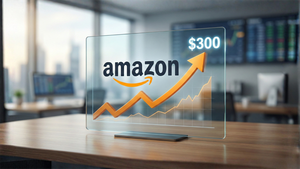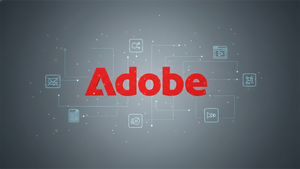
New York, NY – September 26, 2025 – While the broader market experienced its third consecutive day of declines on Thursday, September 25, 2025, with major indices retreating amidst investor caution, the Information Technology (IT) sector presented a complex narrative. Contrary to an initial perception of a slight gain, the IT sector broadly contributed to the market's downturn, leading losses on the day. However, within this challenging environment, a select few tech giants demonstrated remarkable resilience, surging on the back of potent company-specific catalysts, offering a glimpse into the underlying strengths that can emerge even in a bearish sentiment.
This contrasting performance underscores a critical shift in investor focus, moving beyond broad sector trends to scrutinize individual company fundamentals and unique growth drivers. As the market grappled with strong economic data tempering interest rate cut expectations and anticipation for key inflation figures, the ability of companies like Intel and IBM to post significant gains against a prevailing headwind highlights the enduring power of innovation, strategic partnerships, and technological advancements in shaping investment narratives.
Divergent Paths: A Closer Look at the IT Sector's September 25th Performance
Thursday, September 25, 2025, saw a widespread retreat across U.S. stock markets, with the S&P 500 falling 0.5%, the Nasdaq Composite sliding between 0.3% and 0.5%, and the Dow Jones Industrial Average dropping 0.4%. This marked a continuation of a downward trend, fueled by investor apprehension ahead of the crucial August Personal Consumption Expenditures (PCE) index. Despite robust economic indicators, including an upward revision to Q2 GDP growth to 3.8% and a decline in weekly jobless claims, the market remained cautious, scaling back expectations for aggressive interest rate cuts.
Against this backdrop, the Information Technology sector, often a bellwether for growth, found itself among the worst performers, broadly leading the market's losses. Many prominent tech stocks experienced declines, with Oracle (NYSE: ORCL) shares falling 5.6% following a "sell" rating, Micron Technology (NASDAQ: MU) down 3%, Amazon (NASDAQ: AMZN) slipping nearly 1%, and Tesla (NASDAQ: TSLA) ending down over 4%. Jabil (NYSE: JBL), an electronic parts supplier, also saw a 6.7% dip despite strong earnings, citing pressures in its automotive and renewable energy segments.
However, the day was not without its victors within the tech landscape. Intel (NASDAQ: INTC) shares surged approximately 9%, marking the S&P 500's top daily performance. This impressive rally was reportedly sparked by discussions of Apple potentially acquiring a stake in the chipmaker. Similarly, IBM (NYSE: IBM) shares climbed more than 5% after HSBC announced a successful trial using IBM's quantum computers for algorithmic bond trading, showcasing a 34% improvement in predicting trade execution likelihood. This stark divergence highlights that while broad market sentiment was negative, targeted institutional buying in certain tech names, driven by specific positive developments, was evident.
Winners and Losers: The Impact on Public Companies
The contrasting performance within the IT sector on September 25th provides a clear illustration of how company-specific news and strategic developments can either amplify or mitigate broader market trends. For companies like Intel (NASDAQ: INTC) and IBM (NYSE: IBM), the day was a significant win. Intel's potential collaboration or investment from Apple signals a strong vote of confidence in its technology and strategic direction, potentially opening new avenues for growth and market share, especially in the competitive chip manufacturing space. For IBM, the successful application of its quantum computing technology in a real-world financial scenario validates its long-term investments in advanced research and development, positioning it as a leader in emerging technological frontiers. These developments could lead to increased investor interest, higher valuations, and potentially new revenue streams for both companies.
Conversely, the majority of the IT sector, including giants like Oracle (NYSE: ORCL), Micron Technology (NASDAQ: MU), Amazon (NASDAQ: AMZN), and Tesla (NASDAQ: TSLA), faced headwinds. Oracle's downgrade by Rothschild Redburn suggests a reassessment of its near-term prospects, potentially impacting investor confidence and stock performance. The declines in other major tech players could be attributed to profit-taking after recent highs, concerns over stretched valuations, or broader market anxieties about inflation and interest rates impacting growth-oriented companies. For these companies, the challenge will be to articulate clear growth strategies and demonstrate resilience in the face of ongoing economic uncertainties, potentially through innovative product launches, cost efficiencies, or strategic acquisitions to regain investor favor.
The day's events also highlight the vulnerability of suppliers like Jabil (NYSE: JBL) to specific sector pressures, even when overall financial performance is strong. Their slip despite topping forecasts indicates that market participants are keenly attuned to underlying segment weaknesses, particularly in cyclical industries like automotive and renewable energy. This suggests that even well-performing companies need to navigate complex supply chain dynamics and diversified market exposure to maintain stability in volatile environments.
Wider Significance: A Shift in Market Dynamics
The events of September 25, 2025, extend beyond mere daily fluctuations, pointing to broader industry trends and a potential recalibration of market dynamics. The overall underperformance of the IT sector, particularly among the "megacaps and big technology shares" that have previously driven market highs, suggests a possible rotation away from broad tech exposure. Investors may be becoming more discerning, moving capital towards sectors or individual companies with clearer value propositions, robust earnings, or compelling growth narratives that are less susceptible to macroeconomic headwinds. This fits into a broader trend where investors are increasingly prioritizing profitability and tangible results over speculative growth, especially in an environment of potentially higher-for-longer interest rates.
The significant rallies in Intel and IBM, despite the sector's general decline, underscore the increasing importance of company-specific catalysts. In a market where broad-based gains are harder to come by, investors are actively seeking out unique stories – be it potential M&A activity, groundbreaking technological advancements, or successful real-world applications of innovative solutions. This trend could lead to a more fragmented market, where individual stock performance is less correlated with sector-wide movements, and fundamental analysis gains even greater prominence. Regulatory or policy implications could also play a role, as discussions around antitrust and market dominance continue to influence perceptions of large tech companies. Historically, periods of market uncertainty often lead to a flight to quality and a focus on companies with strong balance sheets and proven business models, which aligns with the observed behavior.
Potential ripple effects on competitors and partners are also worth considering. If Apple were to invest in Intel, it could reshape competitive dynamics in the chip industry, potentially putting pressure on other chip manufacturers. Similarly, IBM's success in quantum computing applications could accelerate adoption across the financial sector, prompting competitors to intensify their own quantum research and development efforts. This competitive pressure could spur further innovation but also lead to increased R&D spending and potential consolidation within the tech landscape.
What Comes Next: Navigating the Evolving Tech Landscape
Looking ahead, the short-term outlook for the Information Technology sector will largely hinge on the upcoming August PCE inflation report and the Federal Reserve's subsequent signals regarding monetary policy. Any indications of persistent inflation could further delay interest rate cuts, potentially creating continued headwinds for growth-oriented tech stocks. In the immediate future, investors will likely remain cautious, with a continued focus on company earnings reports and forward-looking guidance to assess the true health of individual tech firms.
In the long term, the events of September 25th suggest that the tech sector is entering a more mature and discerning phase. The era of undifferentiated growth for all tech companies may be receding, giving way to an environment where strategic pivots, adaptive business models, and demonstrable innovation are paramount. Companies that can successfully integrate emerging technologies like AI and quantum computing, forge strategic partnerships, or tap into new markets will likely thrive. Conversely, those that fail to adapt or face significant competitive pressures may struggle to maintain their valuations. Market opportunities may emerge in niche tech segments, cybersecurity, or companies providing essential infrastructure and services, which tend to be more resilient during economic downturns.
Potential scenarios include a continued bifurcation of the tech market, with strong performers driven by unique catalysts and weaker players facing ongoing pressure. Another scenario could see a broader market recovery lifting all boats, but with a continued emphasis on fundamental strength and profitability. Investors should watch for further consolidation within the tech sector, as larger players seek to acquire innovative startups or bolster their market positions. The evolving regulatory landscape, particularly concerning data privacy and artificial intelligence governance, will also be a key factor shaping the future of tech.
Wrap-Up: Resilience, Redefinition, and the Road Ahead
Thursday, September 25, 2025, served as a potent reminder of the complex and often contradictory forces at play within the financial markets. While the Information Technology sector broadly succumbed to a wider market downturn, the exceptional performances of companies like Intel and IBM underscored a crucial takeaway: even in challenging environments, individual corporate strength, driven by innovation and strategic foresight, can defy gravity. This highlights a market that is increasingly sophisticated, rewarding specific achievements and clear value propositions over generalized sector enthusiasm.
Moving forward, the market will likely continue to be influenced by macroeconomic factors, particularly inflation and interest rate trajectories. However, the resilience demonstrated by certain tech companies suggests a redefinition of what constitutes a "winning" investment in the sector. Investors should assess companies not just on their growth potential, but also on their ability to generate sustainable profits, adapt to technological shifts, and navigate regulatory complexities.
The lasting impact of this period may be a more selective and fundamentally driven approach to tech investing. What investors should watch for in the coming months are not just overall market trends, but also specific company announcements, technological breakthroughs, and strategic partnerships that could signal the next wave of outperformance. The tech sector remains a powerhouse of innovation, but its future success will increasingly depend on its ability to demonstrate tangible value and adaptability in an ever-evolving economic landscape.
This content is intended for informational purposes only and is not financial advice






